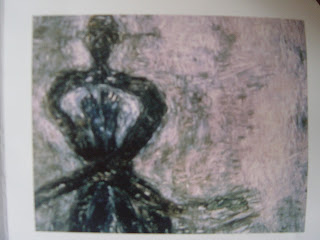Study Questions:
Read Esther Chapter 3.
Apparently, Mordecai had no problem with bowing to the king. Why not to his "right hand man," Haman? Remember their ancestry, and consider the hint in Haman's reaction, vs. 6. Consider parallels with Matt. 4:8-10.
In vss. 6 and 8, what other figure is Haman starting to sound like? See Rev. 12:9,10.
In vss. 10 and 11, does Ahasuerus show God-like wisdom? God-like power?
Consider: Had the Jews committed any real offense against Ahasuerus? Had they (has everyone) committed real offenses against God?
What are the historical context and spiritual significance of Ahasuerus' condemnation of the Jews? See Jeremiah 16:9-11. In what sense are we exiles too? See Hebrews 11:13,14.
Comment on the setting of a particular date for destruction of the Jews in vss. 13 and 14. In a note on Amos 5:18, the New Geneva Study Bible says, "Ultimately, this is the great and terrible 'day of the LORD' when He comes in judgment. Every Old Testament judgment was also a 'day of the LORD.'"
Would the Jews have any cause for hope? See Malachi 4:1-3, and Isaiah 25:1, 8 and 9.
How does the situation of the Jews in Persia compare to our situation in the world today? Consider 2 Peter 3:10 and Titus 2:11-14.
Genealogy and history are key to understanding the events in the book of Esther. Mordecai's ancestry, compared to that of his wicked nemesis Haman, explains the antipathy between the two and represents a division that goes back to the conflict established in Genesis between the seed of the woman and the serpent.
Mordecai is a Benjamite. Thus he is related to King Saul. Haman, "son of Hammedatha the Agagite" (3:1), is connected with Agag, king of the Amalekites, Israel's archenemies. 1 Samuel 14 and 15 detail the war between the two peoples. Saul's army "utterly destroyed all the [Amalekites] with the edge of the sword" (1 Samuel 15:8). It is no wonder that descendants of Agag's line, such as Haman, would hate the Jews and long for their destruction. Incidentally, Saul is another disobedient leader whose failure causes trouble which must be undone.
The opposing nations may be seen as symbols of the everlasting division between God's people and His enemies. This gulf opened at the time of the curse, when God warned "I will put enmity between you and the woman, and between your seed and her Seed: He shall bruise your head, and you shall bruise His heel" (Genesis 3:15).
Mordecai seems to have no trouble showing respect for Ahasuerus as king. In fact, he has demonstrated his loyalty dramatically by reporting the doorkeepers' plot against Ahasuerus in an incident full of portents for the fate of the Jews. It also suggests parallels with the work of Christ, since Esther serves as intermediary to the king, and the written record eventually preserves Mordecai's life.
Even though Ahasuerus has given Haman a "seat above all the princes" (3:1), Mordecai will not bow to him. The absence of the name of God is particularly glaring here, as allegiance to Him would certainly explain Mordecai's behavior. As Jesus repeated in Matthew 4:10 after refusing to bow to Satan, "You shall worship the Lord your God, and Him only you shall serve."
Haman's reaction brings to mind that other name. He sets out to punish not only Mordecai, but all the Jews. He hopes to carry out the wish of the Amalekites and other enemies of God who hope, as in Psalm 83:4-7, to "cut [His people] off from being a nation, that the name of Israel may be remembered no more." In this hatred, Haman resembles no one so much as "the dragon...[who] persecuted the woman who gave birth to the male Child" (Revelation 12:13).
Haman quickly takes the role of "the accuser of our brethren" (Revelation 12:10). "Their laws are different," he whispers to Ahasuerus. "They do not keep the king's laws. Therefore it is not fitting for the king to let them remain" (3:8). Ahasuerus seems impetuous and greedy here. Apparently he likes the idea of the silver coming into his treasury so much, he doesn't bother to investigate whether these peculiar people are actually doing any harm.
The king's character is far from that of the just and omniscient God, but his office gives him similar power over the lives of his subjects. The parallel here between the Jews and the church of Christ is also a little tricky, but their situation still supports the metaphor of Esther as a type of Christ. Technically, the Jews have committed no crime that merits the judgment Ahasuerus places on them through Haman. However, they are in Persia only because their fathers abandoned the worship of the true God.
God tells His rebellious people, "[Your fathers] have forsaken Me and not kept My law. And you have done worse than your fathers, ...Therefore I will cast you out of this land into a land that you do not know..." (Jeremiah 16:11-13). They are exiles because of sin, and they face a particular day of reckoning. We are exiles (Hebrews 11:13,14) because of Adam's sin, and our own, and we face a day of judgment as well. In a note on Amos 5:18, The New Geneva Study Bible says, "Ultimately, this is the great and terrible 'day of the LORD' when He comes in judgment. Every Old Testament judgment was also a 'day of the LORD,' and anticipated that final day."
It is interesting to note that the proclamation that doomed the Jews was sent "to the officials of all people, to every province according to its script, and to every people in their language" (3:12). This saturation of the kingdom with Ahasuerus' will echoes God's authority over His world. While all are under the curse, the redeemed will come "out of every tribe and tongue and people and nation" (Revelation 5:9).
Though the Book of Esther never mentions it specifically, God's people can always hope in His deliverance. He would preserve His Seed by preserving the Jews, and He would save all His people through the resurrection of Christ.






